|
|
3016T Canberra Railway Museum |
|
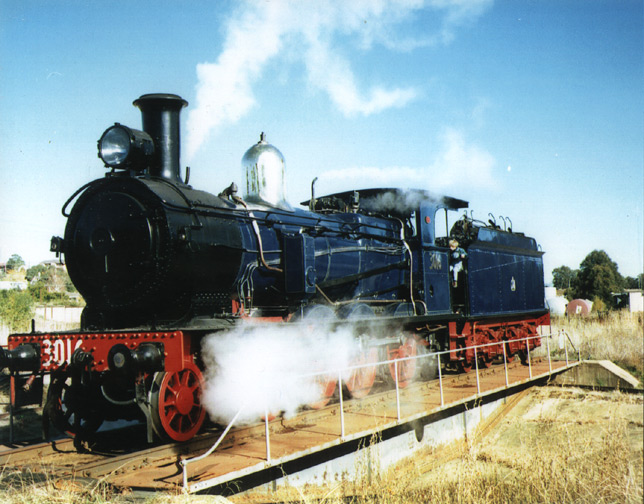
3016T in Prussian Blue livery rides the turntable at
Queanbeyan, NSW in 1994.
My thanks to Shaun Barker for contributing this photo.
|
Builder |
Beyer Peacock
& Co, Manchester |
|
Builder’s Number & Year |
4459 of 1903 |
|
Wheel Arrangement |
4-6-0 |
|
No. in class |
(C)30T
class – 77 (C)30
class – 68 |
|
This locomotive
was built by Beyer Peacock & Co, Manchester as one of the initial 35
locomotives of the S 636 class with 4-6-4T ‘Baltic’ wheel configuration for
Sydney suburban passenger duties, originally carrying the number S 651. This
very successful design was repeated with further deliveries from Beyer
Peacock & Co and the NSW Government Railways (NSWGR) Eveleigh Workshops,
with the class growing to 145 members. These engines became the (C)30 class
in the 1924 renumbering scheme. Following
the electrification of the Sydney suburban system, 3016 became one of 77
class members converted from 4-6-4T to 4-6-0 tender configuration for mixed
traffic use on country branch lines. The converted locomotives were known as
the (C)30T class to differentiate them from the remaining 68 (C)30 class tank
engines, with the ‘T’ denoting ‘tender’. The (C)30T class replaced various
older 4-4-0 and 2-6-0 locomotives at country depots; indeed many (C)30T's
were allocated second-hand bogie Baldwin or 6-wheeled tenders from the
obsolete locomotives they were displacing. The first conversion was 3088
outshopped in July 1928 and the final conversion was completed in 1933. 3016 is
one of 29 (C)30T class locomotives that were further modified with a
superheated boiler which significantly improved both power and fuel
efficiency. In addition, piston vales replaced the original slide valves and
the wooden front buffer beam was upgraded to steel. Superheated (C)30T locos
such as 3016 were generally paired with Beyer-Peacock 3650 gallon bogie
tenders originally supplied with the majority of (C)32 and (D)50 class
locomotives. 3016 was retired
from NSWGR service in 1972 and initially saved for preservation by a group
associated with the Parramatta Rotary Club. In 1978 it was obtained by the Australian
Railway Historical Society (ACT Division), joining saturated 3102 at the Canberra Railway
Museum. 3102 was their original running locomotive but was withdrawn by
the mid 1980’s, at which stage 3016 was restored to operation from 1986 to
1989 and took its place on regular tourist trains along the Cooma line to
Michelago together with other destinations. 3016 wore an attractive Prussian
Blue livery with red wheels from the late 1980’s through the 1990’s, giving
the locomotive a distinctly German look. 3016 was
dismantled for overhaul during 2003 and transferred to the NSW Rail Transport
Museum (NSWRTM), Thirlmere for contract overhaul in late 2004. At completion
of its overhaul, 3016 began running-in duties at the NSWRTM Steam
Extravaganza in September 2006 prior to a number of mainline tours and later
transfer back to Canberra. In more recent times it has received an authentic unlined
black livery. For
further information and historical photographs of the (C)30 class
locomotives, readers are directed to Ron Preston's excellent book ‘Standards
In Steam - The 30 Class’ published by the New South Wales Rail Transport
Museum.
|
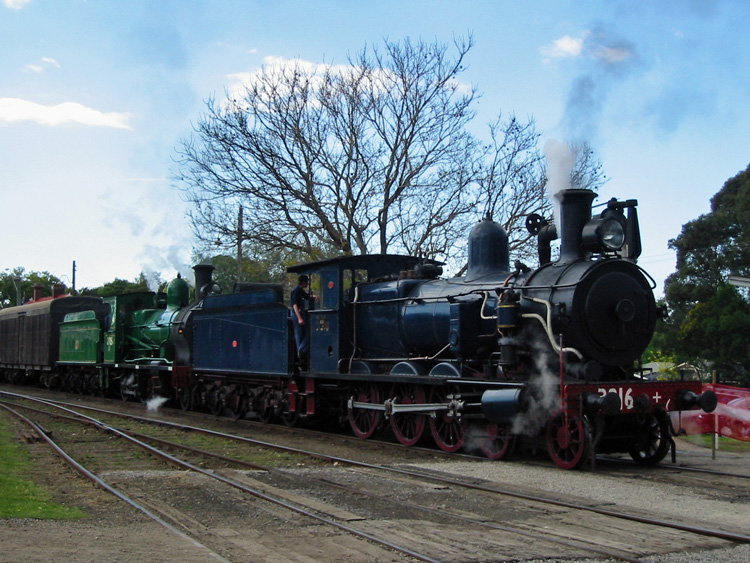
3016 and 2705 paired on a demonstration freight at the
NSWRTM, Thirlmere on 17 September 2006.
The ‘+’ painted on the buffer beam was NSWGR notation for a loco modified with
a superheated.
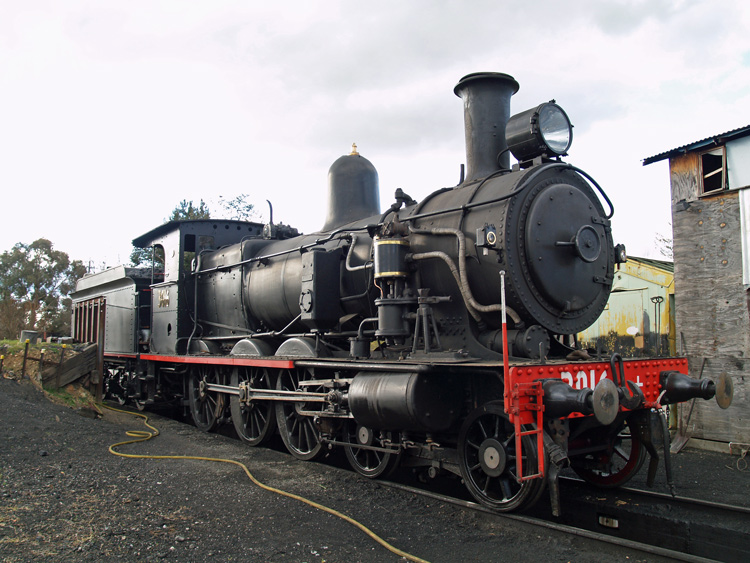
Now wearing authentic unlined black livery, 3016 awaits its
next steaming at the Canberra Railway Museum.
Date for this & following photos: 5 August 2012.
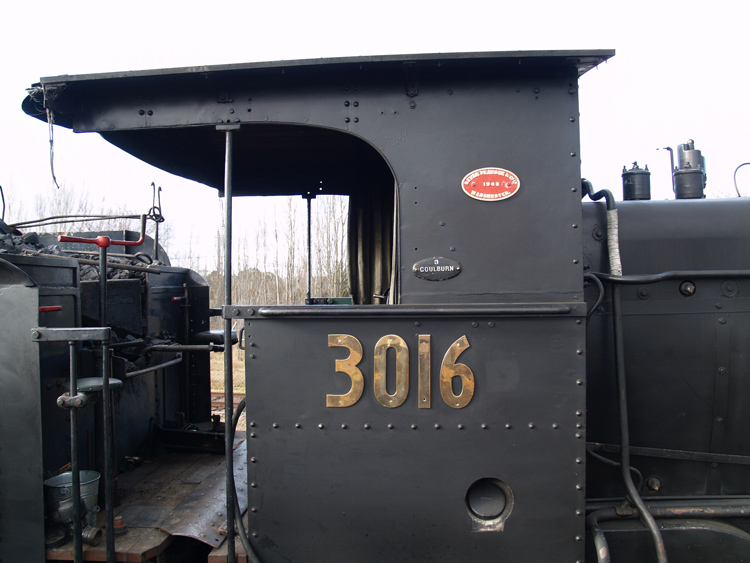
Cab detail.
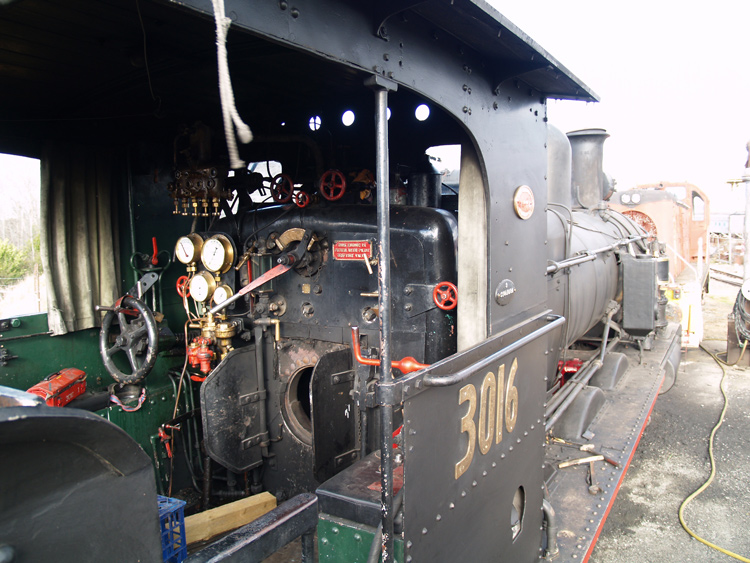
View into the cab and along the running board.
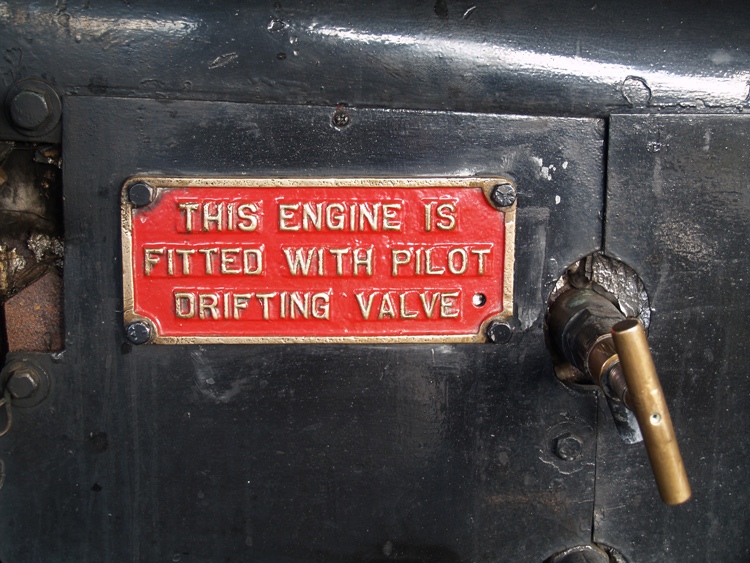
Brass notice plate fitted on the backhead.
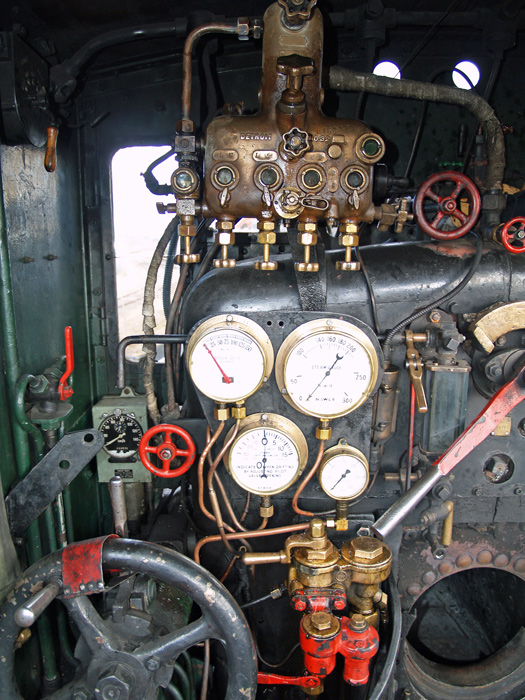
Detroit Lubricator, reversing screw, brake pedestal and
various other controls.
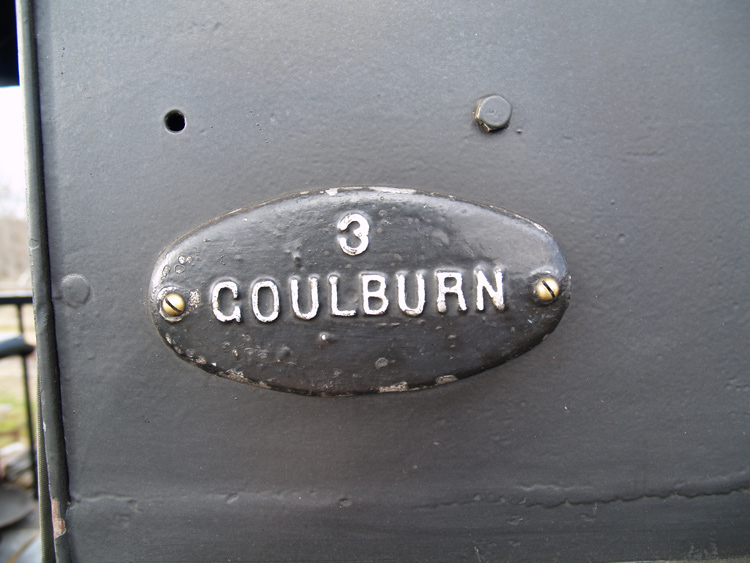
Shedplate attached to the cabside.
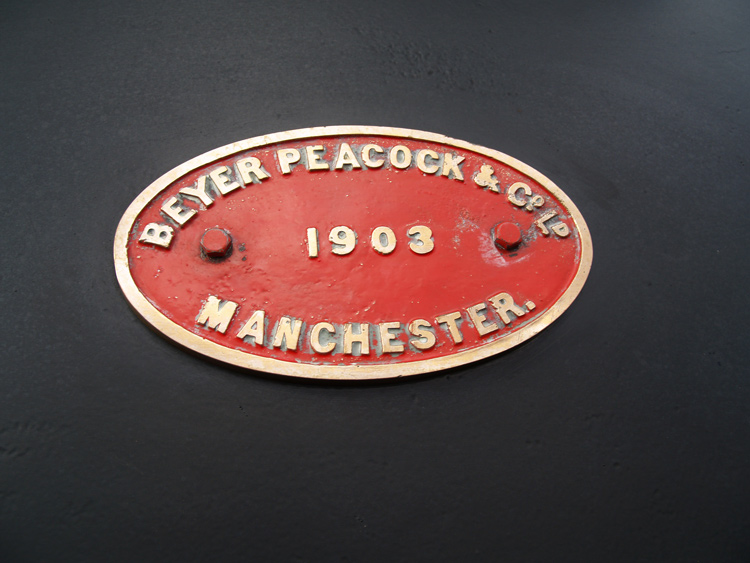
Beyer Peacock & Co builder’s plate.
References
|
a |
‘A
Compendium of New South Wales Steam Locomotives’ compiled
by Alex Grunbach, published by the Australian
Railway Historical Society, New South Wales Division, 1989. |
|
b |
‘Standards
In Steam - The 30 Class’ by Ron Preston, published
by the New South Wales Rail Transport Museum, 1985. |
|
c |
Canberra
Railway Museum website, 3016T page, Accessed 4 June 2025. |
Page updated: 4 June 2025
|
Government Railways: |
|
|||||||||
|
Private & Industrial Railways: |
|